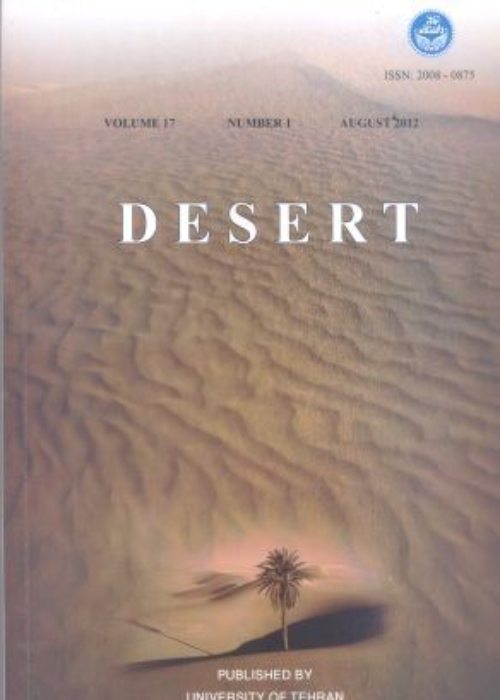Introduction of new indices to identify relative drought tolerance and resistance in wheat genotypes
Author(s):
Abstract:
Three new indices namely: abiotic-stress tolerance index (ATI) (Abiotic-stress Tolerance Index), stress susceptibility percentage index (SSPI) (Stress Susceptibility Percentage Index) and stress non-stress production index (SNPI) were introduced to identify relatively tolerant (through ATI and SSPI) and resistant (through SNPI) genotypes under nonirrigated and irrigated conditions. Sixteen bread wheat genotypes (in 2004, under a moderate stress with SI = 0.31) and twenty durum wheat genotypes (2004 and 2005 under a severe stress with SI = 0.57) were studied in field experiments under non-irrigated and irrigated conditions. Yield changes in non-irrigated and irrigated conditions for different genotypes, the primary selection of genotypes for relative drought tolerance or resistance and a comparison between new indices and previous ones were studied. In this paper, relative tolerance and resistance phrases are used instead of tolerance and resistance because we believe that, generally, there are no complete tolerance and resistance to abioticstress. ATI and SSPI exhibited a positive significant simple correlation with TOL, Yp and SSI, but their correlations with RDI were significantly negative. ATI and SSPI differentiated between relative tolerant and intolerant genotypes better than TOL and SSI in some cases and were considered as a favorite index for the selection of relatively tolerant genotypes. ATI and SSPI are powerful to select extreme tolerant genotypes with yield stability and may be can use of them as parents in conformation to a QTL population for yield stability in two irrigated and non-irrigated conditions, because, both of them are related to relatively yield stability and may be state that a genotype with suitable yield stability carries drought tolerance or other related trait genes. SNPI had a positive correlation with yield changes in both non-irrigated and irrigated conditions and negative correlation with SSI and TOL, therefore, to select a genotype with appropriate, high and stable yield in both stress and non-stress conditions for commercial aims, it is suggested to use SNPI as a desirable index because this index supports stable and high yield in both conditions (especially in non-irrigated condition) simultaneously.
Keywords:
Language:
English
Published:
Pages:
165 to 178
magiran.com/p1510611
دانلود و مطالعه متن این مقاله با یکی از روشهای زیر امکان پذیر است:
اشتراک شخصی
با عضویت و پرداخت آنلاین حق اشتراک یکساله به مبلغ 1,390,000ريال میتوانید 70 عنوان مطلب دانلود کنید!
اشتراک سازمانی
به کتابخانه دانشگاه یا محل کار خود پیشنهاد کنید تا اشتراک سازمانی این پایگاه را برای دسترسی نامحدود همه کاربران به متن مطالب تهیه نمایند!
توجه!
- حق عضویت دریافتی صرف حمایت از نشریات عضو و نگهداری، تکمیل و توسعه مگیران میشود.
- پرداخت حق اشتراک و دانلود مقالات اجازه بازنشر آن در سایر رسانههای چاپی و دیجیتال را به کاربر نمیدهد.
In order to view content subscription is required
Personal subscription
Subscribe magiran.com for 70 € euros via PayPal and download 70 articles during a year.
Organization subscription
Please contact us to subscribe your university or library for unlimited access!


